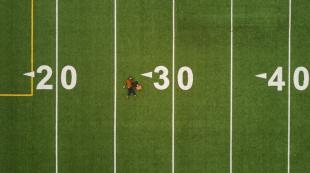Catering services: classification, requirements. Type of activity of the enterprise - cafe "Dolce Vita" Services provided by the restaurant
A restaurant is a catering establishment with a wide range of complexly prepared dishes, including custom and branded dishes, wine and vodka, tobacco and confectionery products, with a high level of service combined with leisure activities. Restaurant catering service is a service for the production, sale and organization of consumption of a wide range of dishes and products of complex manufacture from various types of raw materials, purchased goods, wine and vodka products, provided by qualified production and service personnel in conditions of increased comfort and material and technical equipment in combination with the organization of leisure time.
The restaurant, as a rule, provides consumers with lunch and dinner, and when serving participants at conferences, seminars, and meetings, a full diet. The restaurant organizes catering for various types of banquets and theme nights. The restaurant provides additional services to the population: waiter service at home, ordering and delivery of culinary and confectionery products to consumers, including for banquets; reservation of seats in the restaurant hall.
Leisure services include:
- - organization of music services;
- - organizing concerts and variety shows;
- - provision of newspapers, magazines.
Customer service is provided by head waiters and waiters.
In addition to the usual sign, the restaurant has an illuminated sign with design elements. To decorate halls and premises for consumers, exquisite and original decorative elements (lamps, draperies, etc.) are used. Furniture in a luxury restaurant that matches the interior of the room; the tables have a soft covering. The chairs are soft or semi-soft with armrests. Great demands are placed on dishes and cutlery. We use dishes made of cupronickel, nickel silver, stainless steel, porcelain and faience with a monogram or artistic design, crystal, artistically decorated glassware made of blown glass.
Key terms: restaurant, basic and additional restaurant services, concept restaurant, restaurant platform, national restaurant, private restaurant
Basic and additional restaurant services
Restaurants belong to the public chain restaurant industry. They have not only general functions characteristic of these institutions - production, sale and organization of consumption of food products, but also specific ones, namely:
Combination of the above functions with the organization of recreation, entertainment and leisure for consumers;
Providing high quality products and services at prices appropriate to the class of restaurants;
Providing additional related services: food delivery services to the address, services at home, in the office, etc.
Requirements for restaurants of different classes are presented in Appendix 1. They cover a set of requirements for restaurants, which can be combined into the following groups: requirements for the location and condition of the adjacent territory, premises for consumers; menu and price list, assortment of culinary products and purchased goods; personnel; organization of trade and production processes; compliance with labor safety conditions; provision of services and monitoring their quality; compliance with the sanitary and hygienic regime at the enterprise.
Catering services in restaurants are the main one. At the same time, a free choice of dishes can be offered, food rations can be completed, a festive breakfast, lunch or dinner. When providing this service, most restaurants use the waiter service method (full or partial) * 23. In luxury restaurants, when serving dishes, they use special effects, develop a ritual for serving dishes, and prepare them in the presence of consumers. Quick service restaurants typically use the self-service method. Many of them have a bar counter installed in a separate room, which allows them to expand the range of catering services.
* 23: (The organization of the customer service process is described in detail in section 2.)
Musical services occupy a special place in organizing leisure time. In "highest" class and "luxury" restaurants, performances by vocal and instrumental ensembles, soloists, pop singers, and the like can be organized. In “first” class restaurants, musical service is provided through the use of jukeboxes, video and audio equipment, and the like. Restaurants usually have a banquet area.
Additional services provided by restaurants are divided into three groups:
For the sale and organization of consumption of products and services;
To create convenience for consumers;
Organization of leisure activities. The first group includes:
Organization of services for festive and business meetings outside the restaurant (catering services);
Delivery of culinary products, confectionery products and customer service upon request at workplaces, at home, in a hotel room, on transport, etc.;
Waiter (bartender) services at home;
Sales of coupons (subscriptions) for service with complete rations;
Packaging of products purchased at a restaurant. The second group includes:
Reservation of seats in the restaurant hall by telephone;
Guaranteed storage of consumers' personal belongings (outerwear, bags, etc.);
Calling a taxi upon request of the consumer;
Care for children;
Sale of flowers, souvenirs;
Telephone communications;
Currency exchange;
Reception for calculating credit cards and the like.
The third group includes additional services for organizing leisure time. This could be a casino at a restaurant, a billiards or bowling club, a disco, etc.
To increase the capacity of the restaurant in the spring-summer season, it operates a summer (outdoor) area (summer restaurant). It can be not only an addition to a stationary restaurant, but also its full-fledged look. Thanks to this food establishment, additional amenities are created: the opportunity to sit in the fresh air in comfortable conditions with friends.
GOST 30389-2013
INTERSTATE STANDARD
Catering services
PUBLIC CATERING ENTERPRISES
CLASSIFICATION AND GENERAL REQUIREMENTS
Public catering services Enterprises of public catering. Classification and general requirements
MKS 55.200
Date of introduction 2016-01-01
Preface
Preface
The goals, basic principles and general rules for carrying out work on interstate standardization are established by GOST 1.0 "Interstate standardization system. Basic provisions" and GOST 1.2 "Interstate standardization system. Interstate standards, rules and recommendations for interstate standardization. Rules for development, adoption, updating and cancellation"
Standard information
1 DEVELOPED by the Open Joint Stock Company "All-Russian Scientific Research Institute of Certification" (JSC "VNIIS")
2 INTRODUCED by the Federal Agency for Technical Regulation and Metrology
3 ADOPTED by the Interstate Council for Standardization, Metrology and Certification (protocol dated November 14, 2013 N 44)
The following voted for adoption:
Short name of the country according to MK (ISO 3166) 004-97 | Abbreviated name of the national standardization body |
|
Ministry of Economy of the Republic of Armenia |
||
Kazakhstan | Gosstandart of the Republic of Kazakhstan |
|
Kyrgyzstan | Kyrgyzstandard |
|
Moldova-Standard |
||
Rosstandart |
||
Uzbekistan | Uzstandard |
4 By Order of the Federal Agency for Technical Regulation and Metrology dated November 22, 2013 N 1676-st, the interstate standard GOST 30389-2013 was put into effect as a national standard of the Russian Federation on January 1, 2016.
5 INTRODUCED FOR THE FIRST TIME
6 REPUBLICATION. March 2019
Information on the entry into force (termination) of this standard and amendments to it on the territory of the above states is published in the indexes of national standards published in these states, as well as on the Internet on the websites of the relevant national standardization bodies.
In case of revision, change or cancellation of this standard, the relevant information will be published on the official website of the Interstate Council for Standardization, Metrology and Certification in the catalog "Interstate Standards"
1 area of use
This standard establishes general requirements and classification of public catering establishments (facilities) of various types.
This standard applies to public catering enterprises (facilities) of legal entities and individual entrepreneurs.
2 Normative references
This standard uses normative references to the following interstate standards:
GOST 30494 Residential and public buildings. Indoor microclimate parameters
GOST 31984 Catering services. General requirements
GOST 31985 Catering services. Terms and Definitions
Note - When using this standard, it is advisable to check the validity of reference standards and classifiers on the official website of the Interstate Council for Standardization, Metrology and Certification (www.easc.by) or according to the indexes of national standards published in the states specified in the preface, or on official websites of the relevant national standardization bodies. If an undated reference is given to a document, then the current document should be used, taking into account all changes made to it. If a referenced document to which a dated reference is given is replaced, the specified version of that document should be used. If, after the adoption of this standard, a change is made to the referenced document to which a dated reference is made that affects the referenced provision, that provision shall apply without regard to that change. If a document is canceled without replacement, then the provision in which a reference to it is given applies to the part that does not affect this reference.
3 Terms and definitions
This standard uses terms and definitions in accordance with GOST 31985, as well as the following terms with corresponding definitions:
3.1 public catering enterprise (facility) (food enterprise (facility): A property complex used by a legal entity or individual entrepreneur to provide public catering services, incl. manufacturing public catering products, creating conditions for the consumption and sale of public catering products and purchased goods both at the place of production and outside it on orders, as well as for providing a variety of additional services.
3.2 restaurant: A catering enterprise (facility) that provides the consumer with catering and leisure or non-leisure services, with a wide range of complexly prepared dishes, including specialty dishes and products, alcoholic, soft, hot and other types of drinks, confectionery and bakery products, and purchased goods.
3.3 cafe: A catering enterprise (facility) that provides the consumer with catering and leisure services or without leisure, providing a limited range of products and services compared to a restaurant, selling specialty dishes, confectionery and bakery products, alcoholic and non-alcoholic drinks, and purchased goods.
3.4 bar: A catering establishment (facility) equipped with a bar counter and selling, depending on its specialization, alcoholic and (or) non-alcoholic drinks, hot and cold drinks, dishes, cold and hot snacks in a limited assortment, and purchased goods.
3.5 :
A food enterprise (facility) that sells a narrow range of dishes, products, and drinks of simple production, usually from highly prepared semi-finished products, and provides minimal time spent serving consumers.
3.6 buffet: A public catering enterprise (facility) that sells, for on-site consumption, a limited range of public catering products from highly prepared semi-finished products, including cold and hot dishes, snacks, baked goods, bakery and confectionery products, alcoholic and non-alcoholic drinks, and purchased goods.
3.7 cafeteria: A public catering enterprise (facility) equipped with a buffet or bar counter, selling hot drinks, soft drinks, a limited range of public catering products from highly prepared semi-finished products, including sandwiches, bakery and confectionery products, hot dishes of simple preparation and purchased goods.
3.8 dining room: A catering enterprise (facility) that prepares and sells, with on-site consumption, a variety of dishes and culinary products in accordance with a menu that differs by day of the week.
3.9 snack bar: A food establishment (facility) with a limited range of dishes and products of simple manufacture and intended for quick service to consumers, with the possible sale of alcoholic beverages and purchased goods.
3.10 culinary store (department): A store (department) for selling public catering products to the population in the form of culinary products, semi-finished products, confectionery and bakery products.
3.11 type of public catering enterprise (facility): Type of enterprise (facility) with characteristic service conditions, range of catering products sold and technical equipment.
3.12 procurement shop (facility): A public catering enterprise (facility) that produces culinary products, bakery and confectionery products and supplies them to pre-production facilities, culinary stores (departments), retail chains and other organizations, as well as for delivery to consumers according to their orders"
4 Classification of public catering enterprises (facilities)
4.1 Public catering enterprises (facilities) are divided according to the nature of their activities, types and mobility (see Table 1)
Table 1 - Classification of public catering enterprises (facilities)
Classification sign of public catering enterprises (facilities) | Classification groups |
By nature of activity* | Enterprises (facilities) that organize the production of public catering products with the possibility of delivery to consumers: procurement factories, workshops for the production of semi-finished products and culinary products, specialized culinary shops, in-flight catering enterprises (workshops), etc. Enterprises (facilities) organizing the production, sale of public catering products and servicing consumers with on-site consumption and takeaway (export) with the possibility of delivery: restaurants, cafes, bars, canteens, fast food enterprises (facilities), snack bars, cafeterias, buffets. Enterprises (facilities) organizing the sale of public catering products with possible on-site consumption: stores (departments) |
Restaurant, cafe, bar, canteen, fast food establishment, buffet, cafeteria, culinary store (department) |
|
By mobility | Stationary Mobile |
On organizing the production of public catering products | Enterprises (facilities) working on raw materials (with a full technological cycle), semi-finished products (pre-production), combined |
By service level | Enterprises (objects) class (category) luxury, highest, first |
By location | Public and closed, serving a certain contingent of consumers |
By operating time | Permanent, seasonal (summer) |
* Catering enterprises (facilities) of any type can provide catering services (including catering services). |
|
4.2 The main classification characteristics of restaurants, cafes, bars, canteens are given in Table A.1 of Appendix A.
4.3 The main classification characteristics of fast food establishments, snack bars, cafeterias, buffets, and culinary stores are given in Table A.2 of Appendix A.
5 General requirements for public catering establishments (facilities)
5.1 Public catering enterprises (facilities) can be located:
- in residential buildings;
- public buildings, including free-standing and hotel buildings and other accommodation facilities, train stations, shopping, shopping and entertainment, complex entertainment centers, cultural, entertainment and sports facilities, educational, scientific and medical organizations, company offices;
- on the territory of industrial facilities, military units, correctional institutions, sanatorium and health resorts;
- on transport.
5.2 Public catering enterprises (facilities) can be permanent or seasonal (summer, etc.).
5.3 At public catering enterprises (facilities) of various types, the safety of life and health of consumers, the safety of their property must be ensured and the requirements of regulatory legal acts, regulatory legal and regulatory documents in force in the territory of the state that has adopted the standard must be met.
5.4 Public catering establishments (facilities) of any type must have convenient access roads and pedestrian access to the entrance, as well as the necessary reference and information signs.
The area adjacent to the enterprise (facility) must be landscaped and illuminated at night.
On the territory adjacent to the restaurant there must be a parking lot, including for disabled people (at least three parking spaces).
5.5 Architectural and planning solutions and structural elements of buildings of public catering enterprises (facilities) and the technical equipment used must comply with the regulatory documents in force in the territory of the state that has adopted the standard.
5.6 Public catering establishments (facilities) must provide emergency exits, stairs, instructions on what to do in an emergency, as well as clearly visible information signs that provide free orientation for consumers in both normal and emergency situations.
5.7 Stationary public catering establishments (facilities) of all types must be equipped with engineering systems and equipment that provide the required level of comfort in accordance with GOST 30494.
5.8 When locating public catering enterprises (facilities) in residential buildings, their premises must comply with the requirements of building regulations for noise and vibration levels and comply with sound insulation requirements in accordance with GOST 30494. Catering establishments occupying part of a residential building must be equipped with separate entrances (exits).
5.9 Public catering enterprises (facilities) of all types are obliged to bring to the attention of consumers in a visual and accessible form the necessary and reliable information about the services provided, ensuring the possibility of their correct choice, including: the company name (name) of their organization, its location (address ), type of enterprise and mode of operation, placing the specified information on a sign and/or in other places convenient for consumers to familiarize themselves with in accordance with regulatory legal documents in force in the territory of the state that has adopted the standard.
5.10 At public catering enterprises (facilities) under construction and reconstruction to serve the disabled and other low-mobility groups of the population, inclined ramps at the entrance doors for the passage of wheelchairs, elevators, platforms for turning wheelchairs in the halls, specially equipped toilet rooms should be provided in accordance with international recommendations and regulatory documents in force in the territory of the state that has adopted the standard.
5.11 At public catering enterprises (facilities), in accordance with the specifics of the population served, special service areas may be provided, for example, dietary, medical and preventive, baby food, etc.
5.12 The placement and layout of production premises and equipment in these premises must ensure the sequence (flow) of technological processes for manufacturing (production) and sales of products and comply with the requirements of regulatory documents in force in the territory of the state that has adopted the standard.
5.13 Public catering establishments (facilities) located above the 3rd floor of public buildings, including in hotels and other accommodation facilities, must be equipped with freight elevators.
5.14 Public catering enterprises (facilities) are equipped with furniture (tables, chairs, armchairs, bar and buffet counters), tableware and cutlery, table linen, decorative items corresponding to the interior of the premises and thematic focus of the enterprise.
At public catering enterprises (facilities), the stylistic unity of the interior of the hall, furniture and serving must be ensured or the specialization of the enterprise must be reflected.
Catering establishments (facilities) must have menus of various designs in the state language and a wine list (and/or tea, coffee, dessert lists), designed according to their specialization. The menu is designed using typographic or computer methods. It is allowed to use alternative menu formats (slates, stands, light boards, touch monitors and displays, etc.). In buffets, cafeterias, and culinary stores, price lists and price tags are issued for the food products sold.
Note - The menu can be designed in the form of a general menu and/or separate menus: lunch menu, brunch menu, dessert menu, salad bar menu, children's menu, vegetarian, seasonal and others.
5.15 Public catering enterprises (facilities), depending on the type of enterprise, must have an assortment list of public catering products, drinks, related products for inclusion in the menu, price lists, maps, presented in Table 2.
Table 2 - Assortment list of catering products, drinks and related products
Name of public catering enterprise (facility) | Assortment list of catering products, drinks, related products |
Restaurant | Original, gourmet, custom-made and signature dishes, desserts and drinks of our own production, dishes of national (ethnic) cuisines, taking into account the concept and specialization of the enterprise. Wide selection of alcoholic and non-alcoholic drinks. |
Dishes, desserts and drinks of our own production, including branded, national, industrial semi-finished products, taking into account the specialization of the enterprise. A small selection of alcoholic and non-alcoholic drinks. Related products: tobacco products, branded souvenirs, printed materials |
|
Mixed drinks, homemade cocktails, snacks, desserts, incl. branded, hot dishes from semi-finished industrial products, taking into account the specialization of the enterprise. Wide selection of alcoholic and non-alcoholic drinks (for non-specialized bars). Related products: tobacco products, branded souvenirs, printed materials |
|
Dining room | A varied assortment of dishes and products, purchased food products by day of the week, taking into account the specifics of the consumer groups served and diets. Free choice of dishes or complete meal plans |
Fast food establishment | A narrow range of dishes and culinary products of simple production from various semi-finished products of a high degree of preparation and industrial production and (or) from semi-finished products of a high degree of preparation of a certain type (meat, fish, poultry, etc.). Selection of soft drinks |
Snack bar | A limited range of dishes, products, simple production, from raw materials and semi-finished products and (or) from a certain type of raw materials and semi-finished products, incl. industrial semi-finished products. Selection of soft and alcoholic drinks |
Cafeteria | A limited assortment of mainly cold dishes of simple preparation from highly prepared semi-finished products, incl. industrial production, hot and cold drinks |
A limited assortment of dishes, products, drinks of simple production, from semi-finished products and finished industrial products. Purchased goods and drinks |
|
Shop (cooking department) | A diverse range of products (culinary products, semi-finished products, flour and confectionery products), taking into account the location and the population served. Purchased goods and drinks |
5.16 The public catering enterprise (facility) independently determines the list of services provided in the field of public catering. Additional services include:
- services for organizing and conducting catering, incl. delivery of products according to consumer orders and field service;
- organization of music and entertainment (animation) services;
- banquet services, incl. special events;
- information and consulting (consulting) services;
- calling a taxi by order (request) of consumers;
- parking or guarded parking of a car on the territory of the enterprise (facility).
5.17 A public catering enterprise (facility) can establish rules of behavior for consumers that do not contradict regulations and regulatory legal documents in force in the territory of the state that has adopted the standard (limiting smoking, prohibiting consumers from wearing outerwear, etc.).
5.18 The minimum general requirements for public catering enterprises (facilities) of various types are given in Table B.1 of Appendix B.
Appendix A (recommended). Classification characteristics of public catering enterprises (facilities) by type
Table A.1 - Classification characteristics of restaurants, cafes, bars, canteens
Signs of classification of enterprises (objects) of various types | Classification groups |
|||
Restaurant | Dining room |
|||
Non-specialists specialized: vegetarian restaurant gastronomic restaurant dietary restaurant, etc. restaurant serving national (ethnic) cuisine mixed cuisine restaurant European restaurant | Non-specialists specialized: ice cream parlor cafe-patisserie cafe-bakery dairy cafe cafe-pizzeria kebab cafe coffee shop-tavern cafe-tea and others | Non-specialists specialized: beer hall (pub bar) coffee dessert lactic cocktail bar grill bar sandwich and salad bar and others | Canteens selling dishes, products and drinks of mass demand; vegetarian canteens; dietary canteens, including catering units of health and medical institutions |
|
Consumer interests, locations | Club restaurant (restaurant-salon); sports restaurant; restaurant-night club; a restaurant at a hotel and other accommodation facilities for room service; dining car and others | Cafe for youth; cafe-club; Internet cafe; art cafe; café-zucchini; cafe-karaoke and others | Videobar; variety bar; disco bar; dance; bar (Dance Hall); karaoke bar; Lobby bar; sports bar bar-nightclub; pool bar; coupe bar and others | Public dining room; a canteen serving a specific group of consumers: school, student, corporate, service, office, work/industrial enterprises and others |
Methods and forms of service | Restaurant: fully self-catering catering restaurant; restaurants with open kitchens | with full waiter service; with partial waiter service; with partial self-service; fully self-catering | with bartender service; with service by bartenders and waiters | Dining rooms: with full self-service; with partial self-catering |
The classification characteristics of public catering enterprises (facilities) that exist in practice are given. At the same time, new types of enterprises (objects) are not excluded. Lobby bars can operate in hotels, business centers and fitness centers. Full service by waiters is carried out according to a menu card with a free choice of dishes, according to a shortened menu with a free choice of dishes or according to a complex (fixed) menu, when holding a banquet (reception) at the table, a tea banquet. Partial service by waiters is carried out during a banquet at the table, a banquet-buffet; banquet-cocktail. Partial service by waiters is carried out when organizing express service during public events (congresses, conferences, symposiums). Partial service by waiters is carried out when organizing “buffet” type service, including “Brunch”, “Linner” in restaurants and cafes. Full self-service is organized according to the principle of “free flow of consumers” - in a fast food restaurant, cafe Full self-service is organized in the form of a “coffee break” (coffee break) during congresses, conferences, symposiums, incl. in restaurants, cafes at hotels, business centers. Full self-service is organized in the form of a “buffet (buffet)” in restaurants and cafes at hotels. |
||||
Table A.2 - Classification characteristics of fast food enterprises (facilities), snack bars, cafeterias, buffets, culinary stores
Signs of classification of enterprises of various types | Classification groups |
||||
Fast food establishment | Snack bar | Cafeteria | Cookery store |
||
Range of products sold (specialization) | Non-specialists specialist hamburger, pizzeria, dumpling, pancake, pie, donut, kebab, cheburek, etc.; | Non-specialists Specialized wine, glass, beer | Non-specialists | Non-specialists | Non-specialists specialist |
Maintenance Methods | Service by a PBO employee at distribution lines, racks and stations. Performing individual technological operations in full view of consumers | Partially self-catering | Service by bartender or salesperson. Consumption of public catering products is carried out, as a rule, while standing | Bartender service | Seller service. The culinary store can have a cafeteria, departments for ordering and dispensing lunches at home |
Quick service businesses may add the words "express" or "bistro" to their name. |
|||||
Appendix B (recommended). Minimum requirements for public catering establishments (facilities) of various types
Table B.1 - Minimum requirements for public catering enterprises (facilities) of various types
Requirements | Restaurant | Dining room | Fast food establishment | Cafeteria | Cookery store |
|||
Building requirements |
||||||||
Signboard | ||||||||
Entrance for guests, separate from the service entrance for staff | ||||||||
Requirements for premises for consumers |
||||||||
Entrance area: vestibule, hall, antechamber | ||||||||
Wardrobe | ||||||||
Hangers in the hall or vestibule (hall) | ||||||||
Hall (service hall) | ||||||||
Room (zone) for children's games | ||||||||
Toilets | ||||||||
Requirements for technical equipment and equipment |
||||||||
Emergency lighting and power supply: | ||||||||
Emergency lighting (stationary generator or batteries and lights) | ||||||||
Natural and artificial lighting | ||||||||
Water supply | ||||||||
Hot | ||||||||
Cold | ||||||||
Sewerage | ||||||||
Heating ensuring the air temperature in public areas is 19-23°C | ||||||||
Air conditioning system with automatic maintenance of optimal temperature and humidity parameters | ||||||||
Ventilation system that ensures acceptable temperature and humidity parameters | ||||||||
Internet services | ||||||||
Provision of television | ||||||||
Security alarm | ||||||||
Sound insulation ensuring the noise level in catering establishments located in residential buildings is less than 35 dB | ||||||||
Requirements for public sanitary facilities |
||||||||
Toilet equipment: toilet cubicles, washbasin with mirror, electrical outlet, toilet paper, soap or liquid soap dispenser, paper towels or electric towel, coat hooks, waste basket | ||||||||
For fast food restaurants. When organizing the operation of the facility as one of the halls of a complex public catering facility, the premises may be shared. Fast food establishments may have their own hall or area as part of a food court (food court). The culinary store has a sales area. For restaurants and cafes organizing family dinners and Sunday brunches For public catering facilities located at educational and industrial organizations, in public places (hotels, train stations, cinemas, theaters, stadiums and other sports and entertainment complexes, centers and recreation complexes), availability is not required; The canteen may have its own toilet or a shared toilet with the organizations (enterprises) in which the canteen is located. With the exception of mobile PBOs; PBO in the territory of shopping centers, etc. (as part of the food court) - common toilet for shopping centers. For the cafeteria and buffet, there may be a common toilet with the organizations (enterprises) in which the catering establishments are located. For stationary public catering establishments (facilities). With the exception of non-stationary (mobile) food enterprises (facilities) For video bars, variety show bars, disco bars, cinema bars, dance bars, club bars, lobby bars. For sports bars, specialty bars In Internet cafes it is obligatory, in restaurants and bars - at the request of the service provider. For sports bars. Note - The “+” sign means that the requirement must be fulfilled. The "-" sign means that the requirement is not mandatory. |
||||||||
UDC 6.024.3.001.33:006.354 | MKS 55.200 |
||
Key words: catering establishment, classification of enterprises, types of enterprises, restaurant, cafe, bar, dining room, buffet, fast food establishment, cafeteria, culinary store, general requirements for enterprises |
|||
Electronic document text
prepared by Kodeks JSC and verified against:
official publication
M.: Standartinform, 2019
The consumer of the service is an individual or legal entity who uses the products of public catering enterprises for personal needs (food) not related to making a profit. Individuals or legal entities can buy products from public catering enterprises for further resale, while acting as an intermediary between the manufacturer and the consumer of the service in order to make a profit.
The main purpose of public catering services is production, sales, organization of consumption, organization of leisure for individual consumers. At the same time, the social and physiological needs of the population are satisfied. Public catering enterprises satisfy their economic interests by providing basic services. Thus, the service of a catering enterprise is aimed at the consumer and is designed to satisfy his needs. It must be emphasized that the provision of services is important not only for the consumer, but also for the enterprise itself and society as a whole.
To produce public catering products and carry out effective activities, it is necessary that the public catering enterprise be systematically and uninterruptedly supplied with goods and raw materials. Therefore, enterprises establish economic ties with manufacturers and suppliers of goods. By doing this, they provide certain services: sales promotion, logistics, financial, advertising, marketing, etc.
A catering enterprise that provides a wide range of services contributes to the employment of the population, since the provision of these services requires the presence of qualified personnel.
Budgets at various levels are replenished with income from the sale of catering services. State revenues depend on the provision of high-quality services that meet the demand of consumers. In addition, the presence of enterprises providing a wide range of quality services creates a certain image of the territory. At the same time, the provision of services is also beneficial to the enterprise itself, since it forms a favorable attitude among consumers, increases the competitiveness of the enterprise and creates additional income.
The main services of a public catering enterprise are aimed at the consumer, i.e. designed to satisfy his needs: food, communication, relaxation and entertainment. The composition and structure of economic relations, personnel and what income the enterprise can count on in the future depend on the demand of the population.
Each consumer product concentrates useful properties, target orientation, and quality characteristics, which, in the appropriate combination, allow it to find its buyer in the market and turn into a product. In order to become a product, a product must be supplemented with an appropriate set of actions on the part of public catering enterprises that satisfy the needs and requirements of the consumer, giving him the opportunity to choose
and consumption of products in comfortable conditions.
The service is also private in nature, as it is provided to a specific consumer.
With all the variety of services provided by public catering enterprises, they have both common to the bulk of services and specific properties.
Let's take a closer look at some general services catering establishments.
Integrity between production of services and consumption. Unlike physical goods, which are produced, stored in a warehouse, and distributed through numerous intermediaries, services are usually provided and consumed simultaneously. The interaction between the seller and the consumer of a service is a distinctive characteristic of a service as a product.
Inconsistency of content characteristics. A service may be stable in quality, but during the service process this stability may be disrupted. Different services by an object or subject are determined by the characteristics of the service at certain moments. Over time, the seller's skill may increase or decrease, technical equipment may wear out or be improved (modernized).
In addition, depending on the subjective factor, the service purchased by the consumer today may seem unsatisfactory to him, and tomorrow (for example, under the influence of friends) this opinion may change. The quality of the service is largely determined by the condition of the source, his level of qualifications, and mood. This is due to the fact that people are involved in the process of providing and consuming services, and the behavior and relationships of people are usually not predictable and consistent.
Cafe "Dolce Vita" provides the following services.
The main services of the cafe include food services, production of culinary products and confectionery products according to consumer orders, and organization of services.
The cafe catering service is a service for the production, sale and organization of consumption of a wide range of dishes and complex products from various types of raw materials, purchased goods, provided by qualified production and service personnel in conditions of increased comfort and material and technical equipment in combination with the organization of leisure. Upon entering, the client is greeted by a hostess who accompanies him to the dressing room and helps him choose a table (taking into account the desired atmosphere - smoking/non-smoking room). Then, during the entire stay of the client in the cafe, he is served by a waiter who brings the menu, assists in choosing dishes, arranges cutlery, brings dishes, checks out the client, and puts the table in proper order. This basic service is free of charge.
Each client of the Dolce Vita cafe has the opportunity to use the main paid services:
order a dish according to individual wishes,
order a banquet. When organizing celebrations (up to 200 people), the cafe provides hall decoration, a special snack menu, and musical accompaniment.
In addition, the cafe provides a wide range of additional services, available free of charge and for an additional fee. Free services include:
summer veranda with sun loungers;
Take away (opportunity to take food with you).
Paid services include:
bar services providing a wide range of hot, alcoholic and non-alcoholic drinks, cigarettes;
delivery (delivery time - 40 minutes; when ordering over 500 rubles, delivery is free);
live music.
Services provided by the enterprise in accordance with OKUN
Cafe "Dolce Vita" provides services in accordance with the All-Russian Classification of Services to the Population, which is included in
A unified system of classification and coding of social and technical and economic information. In this regard, the main tasks of OKUN include the following:
studying the demand and supply of certain services;
facilitating the ability to provide a variety of services to the population by enterprises of any form of ownership, including individual entrepreneurs;
comparison of the derived Russian OKUN classification with international norms and standards;
identification of current types of services required by the population in connection with changing market conditions;
ensuring consumer safety in terms of life and health, protecting the environment, preventing damage to property and other harm through certification of services;
improving the efficiency of using computers and computer equipment;
forecasting and recording the volume of services required by the population;
development and improvement of standardization in this industry.
In accordance with OKUN, the cafe "Dolce Vita" provides the following services (Table 2):
Table 2 - Services provided in accordance with OKUN
|
Name of the service provided |
|||
|
Basic services |
|||
|
Food services |
|||
|
Services for the production of culinary products and confectionery products according to consumer orders, including complex designs and with additional decoration at catering establishments |
|||
|
Organization and service of celebrations, family dinners and ritual events |
|||
|
Additional services |
|||
|
Bar food services |
|||
|
Delivery services for culinary products and confectionery products according to consumer orders, including for banquets |
|||
|
Delivery of lunches at home |
|||
|
Music services |
|||
|
Organization of concerts, variety shows and video programs |
So, the Dolce Vita cafe provides a wide selection of basic and additional services that meet all the needs of visitors.









